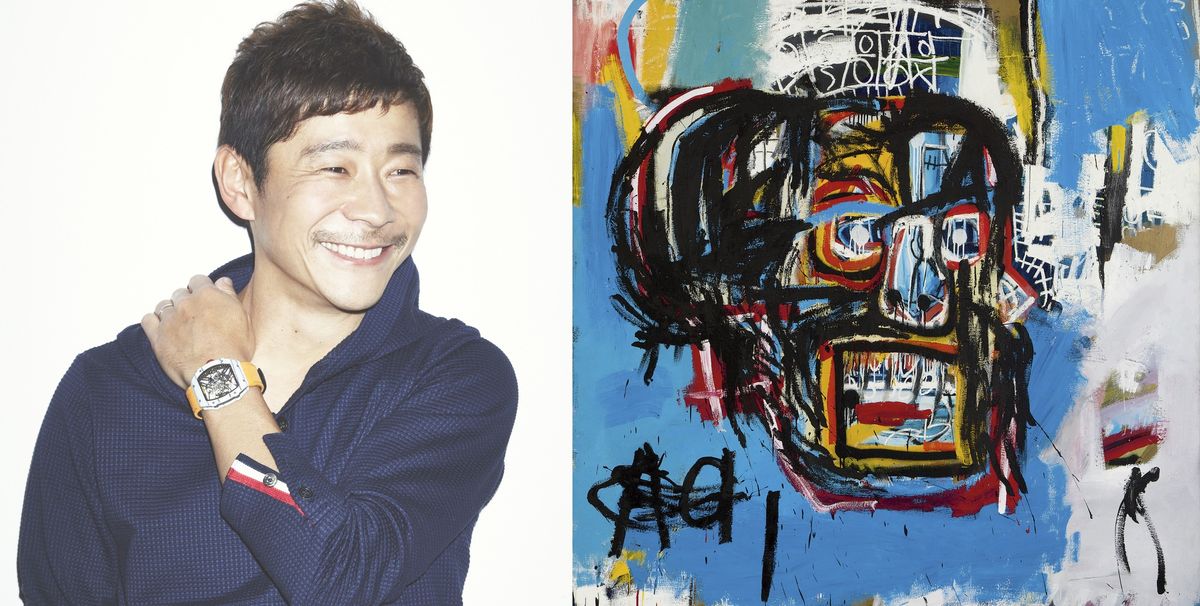By now you've already heard it: last night Sotheby's made history when it sold an untitled Basquiat skull head painting from 1982 for $110.5m with fees to the Japanese billionaire Yusaku Maezawa, marking the highest price at auction for a post-1980 work of art, the second-highest price for any contemporary work at auction and the sixth-highest price for any piece sold at auction, in a sale that totalled $319.2m, with fees.
"This is a day we'll not soon forget," Grégoire Billault, the head of contemporary art, said at the press conference, voice full of emotion.
The news was historical on its face value but especially important in the context of this auction house and this week. Sotheby's has in recent years been plagued by a number of tactical missteps and outside difficulties to the point that the public company had ceded much territory to its private rival Christie's. The sale, too, capped a difficult week where even at the ostensibly successful Christie's contemporary sale the night before the smiles felt forced.
Not so last night. It was already a strong sale as it came to the fateful lot number 24. The room went silent. The auctioneer Oliver Barker started the bidding at $57m, the current Basquiat record, which already inspired gasps. Then followed ten minutes of slow bidding, most bouncing from the phones to the room, in the form of the dealer Nicholas MacClean, the underbidder.
Reporters often use hyperbole when describing the mood in rooms but when the hammer came down at $98m the outright cheering was even louder than when the same house sold Edvard Munch's The Scream for around the same price in 2012. These were fully grown, even ageing adults, openly whooping.
"That's enough excitement for me," David Zwirner said, after everything settled down again. Then he left.
The evening's hammer total was $276.9m, near the high estimate of $277.1m, naturally. Along with Basquiat, artist records were set for Wolfgang Tillmans, Mira Schendel, Blinky Palermo, Takeo Yamaguchi, Keith Haring, and Jonas Wood, whose Black Still Life (2012) hammered for $950,000, almost three times its high estimate, with at least five bidders. The whole sale was this way, packed with solid lots that were naturally overshadowed by the Basquiat. The Keith Haring record came at lot 26 for an untitled work from 1982, and was in the top ten with a hammer price of $5.6m but by then most of the room was clearing out, and nobody was paying attention. They still were not paying attention when another Basquiat, In the Wings (1986), sold for $5.1m at hammer, almost making the top ten, at lot 31.
"You have this new generation of billionaire coming up and they're going to pay whatever they have to pay for certain artists, at whatever level low, mid, high," the dealer David Nisenson said. "Tonight proves that the Modern art market is the contemporary market. All other markets, Impressionist-Modern, feel like niche markets these days.
Phillips
Before the fireworks at Sotheby's, the perennial third-placer Phillips last night hammered down a surprise white-glove sale that brought in $110.3m with premium and saw new artist records for Nicole Eisenman and Peter Doig, who is also now the most expensive living British artist.
Those results belie, slightly, the mood in the room which did not offer much energy or depth of bidding, despite auctioneer Henry Highley's enthusiasm and baroque chandelier bidding. The Doig for example, was a stellar London neighborhood scene Rosedale (1991), holding various guarantees. It sold with just three phone bidders after just two minutes, going only from $23m to $25m. Another such lot was a bust of Roy Lichtenstein's Woman: Sunlight, Moonlight (1996), sold to benefit the Roy Lichtenstein Foundation. It found just two phone bidders and went form $7.5m to $9m in two minutes. That was a record for a Lichtenstein sculpture, but it wasn't much of a sale. Other lots were just lesser versions of these.
That said, a victory is a victory and at Sotheby's shortly after the sale specialists could be heard discussing the Doig result, and its implications for their recently departed colleague, and newly named Phillips Chairman Cheyenne Westphal. ("Oh it sold for that much? How nice for Cheyenne!") Westphal could be seen making bids from the phone at around a third of the lots at Phillips.
The sale also featured a hallmark of this past week: the high-end lot withdrawn likely due to fears that it would buy in. In this case a Gerhard Richter Abstraktes Bild (811-1) from 1994. But perhaps that was a blessing since it ensured 100% of the lots would find a home.


